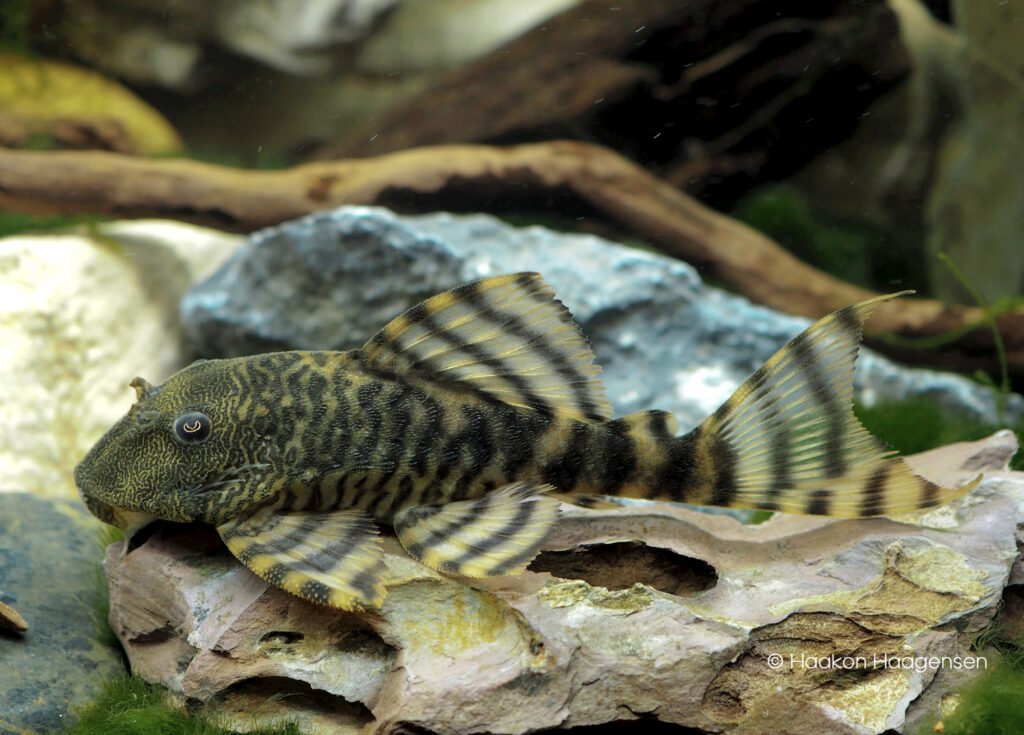
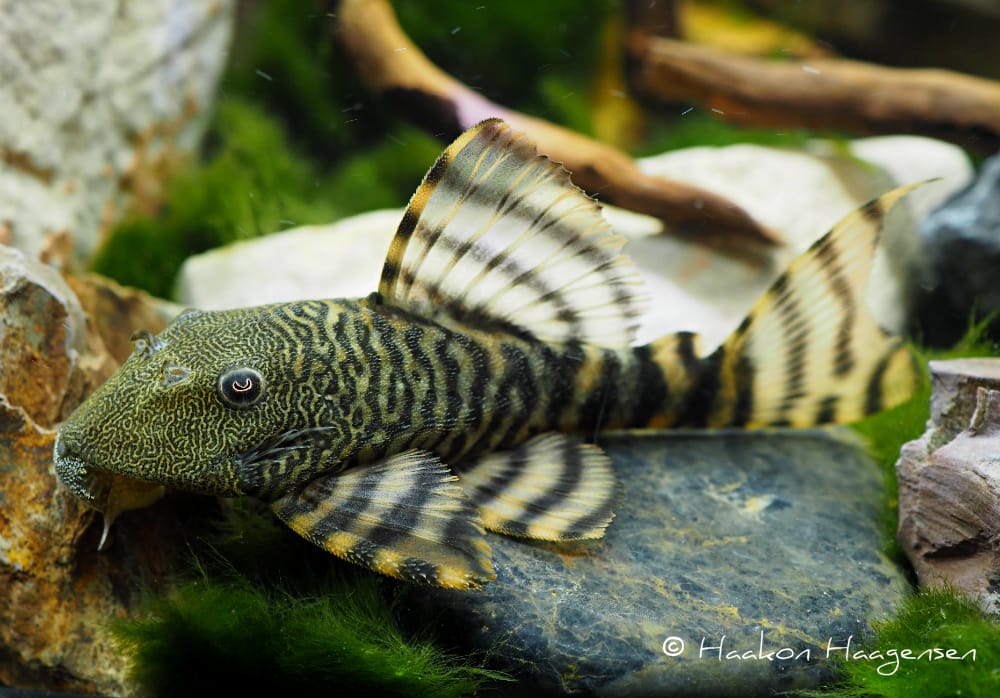
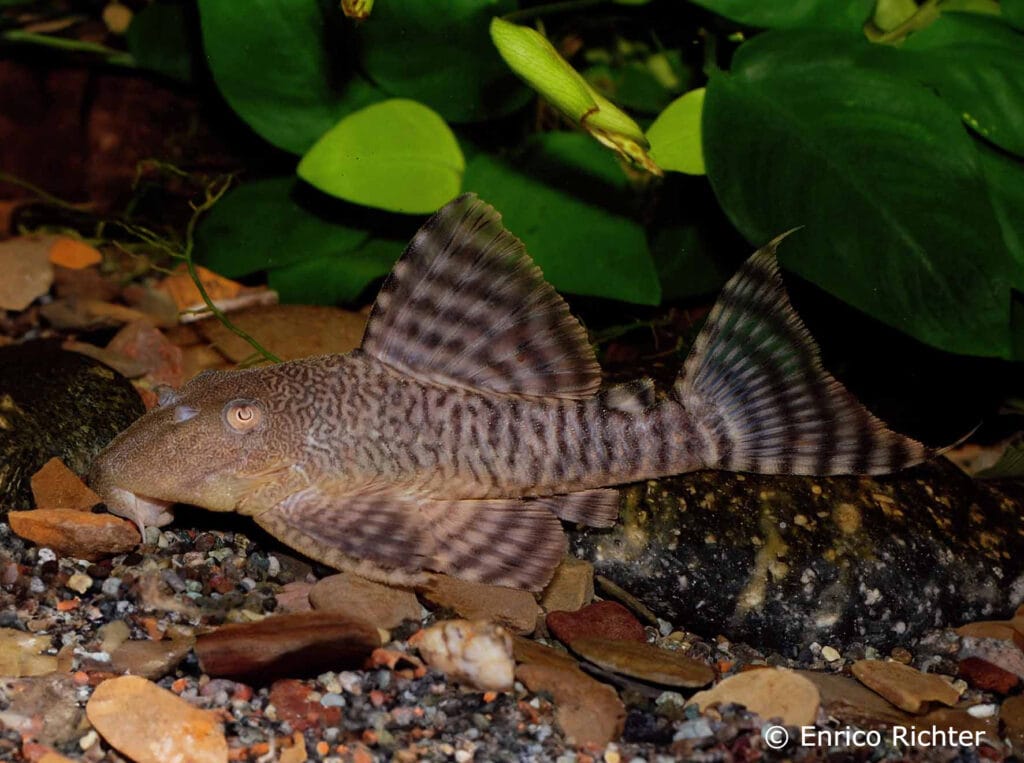
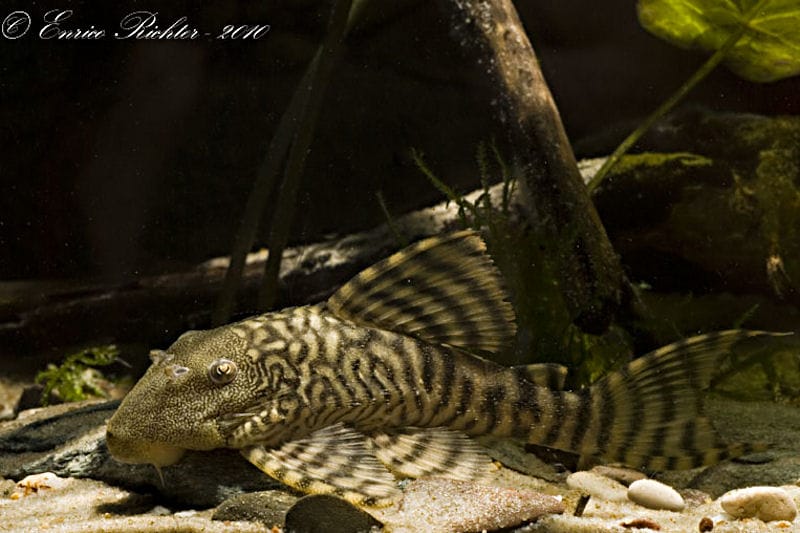
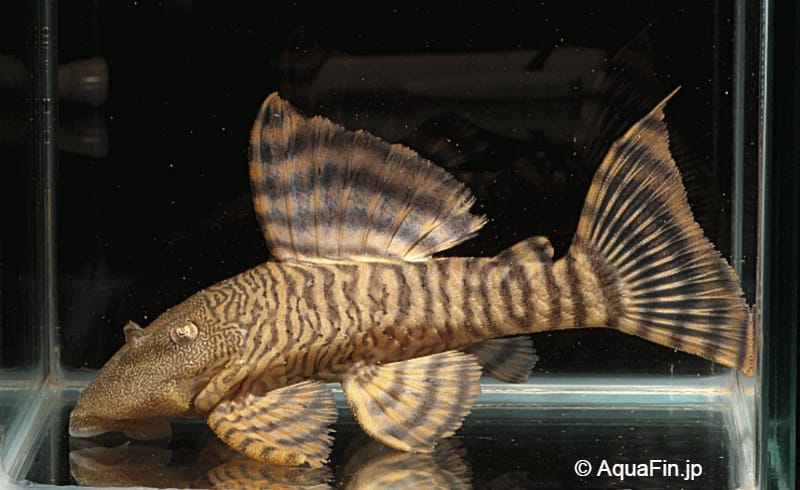
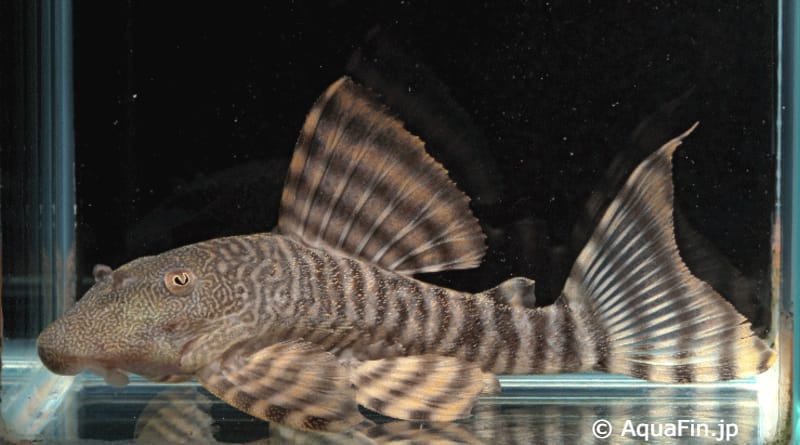
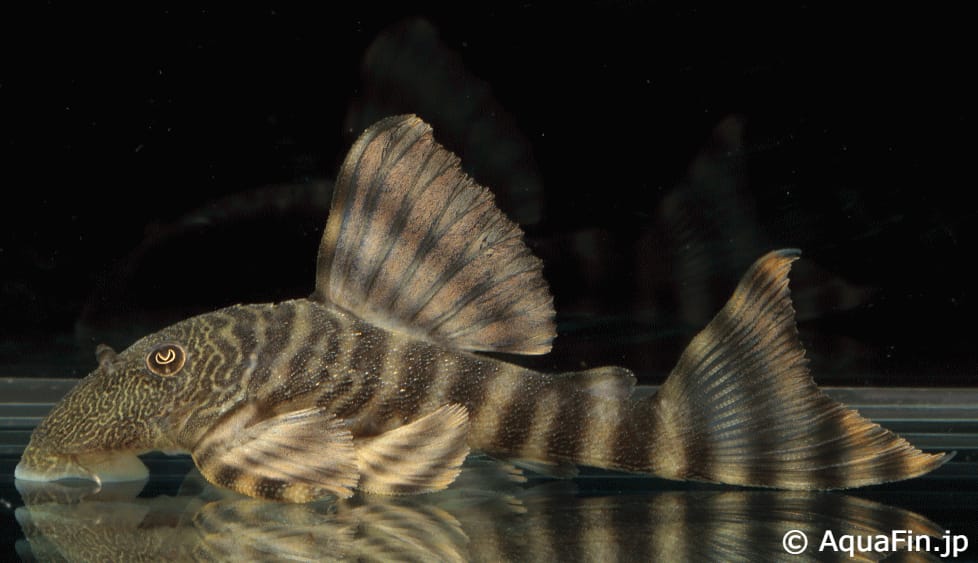
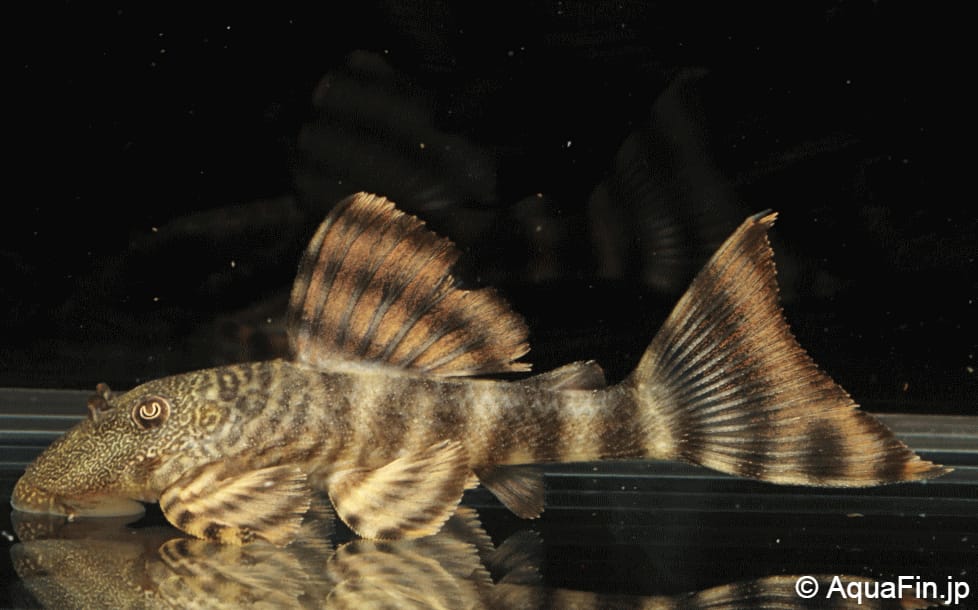
P.changae was first imported to Germany in 1996, and scientifically described six years later. It’s one of the most common L-numbers to be exported from Peru, and also among the more affordable examples of the genus in the hobby.
Facts:
Name: Panaqolus changae (Chockley & Armbruster, 2002)
Trade names: L226, Iquitos Tiger Pleco, White Tiger Pleco, Pink Tiger Pleco
Origin: Rio Itaya, Rio Momon, Peru
Maximum size: 12 cm / 5”
Panaqolus species are great aquarium fish. They need shelter in the form of wood and rocks, and if they feel safe, they will venture out in search of food even during daytime. They prefer a vegetarian diet, and of course wood is essential for their digestion. Some crustaceans and insect larvae can be added to their diet, but a diet consisting of too much protein and too little vegetarian food can cause trouble. They are peaceful Plecos, but males can be quarrelsome over territories and food. Panaqolus species are slightly more challenging to breed than many other popular Plecos, but it’s usually all a matter of time and patience. When they do, they breed in typical Loricariidae manner with the male guarding the brood in his cave. Usually, male Panaqolus develop quite impressive odontodal growth on their flanks and on their fins.
There are lots of similar looking Panaqolus species being exported from both Peru and Brazil. P.changae can be recognized by its dense, vermiculated pattern on the head, which is usually adorned with straight stripes or lines in other Tiger Pleco species. The somewhat similar and closely related P.sp. L206 from Rio Ucayali, Peru, can be told apart from P.changae by the spotted tail pattern (striped in P.changae) and the less vermiculated head pattern.
More info:
